Research Projects
Current Research Projects
Maine Natural Climate Solutions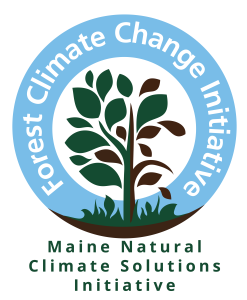
Maine’s natural and working lands can provide a range of natural climate solutions NCS to decrease greenhouse gas (GHG) emissions and increase carbon sequestration through changes in forest and agricultural land management. Alternatives include reforestation, planting of fast-growing tree species, and extended rotations in forests as well as no-till cultivation, cover cropping, and capturing methane from manure on farms. Through the Maine NCS Initiative and related projects, researchers are assessing land management strategies for Maine’s working forests and farms that will optimize future carbon sequestration rates under a range of socioeconomic, climatic, and policy futures.
More on the Natural Climate Solutions Initiative can be found here.
Findings from the Forest Carbon for Commercial Landowners report can be found here.
Evaluating the Relationship Between Conservation Land and Municipal Budgets in Maine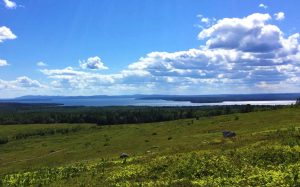
In Maine and New England, growth in protected land over the last 30 years has sparked discussion about the economic implications of conservation. Much of this newly protected land is privately held and typically granted tax-exempt status. Many towns in Maine face fiscal and budgetary challenges with aging populations and lagging economies. Some believe that shifts of land into conservation may erode towns’ tax bases and place a greater burden on homeowners to cover the difference. With this study, initiated by a diverse group of stakeholders, we are responding to a demand for rigorous, data-driven analysis on the economic impacts of land protection. There are three parts to the project: (1) Data analysis using econometric methods; (2) a statewide perceptions survey, and (3) case study interviews with stakeholders targeting four regions of the state. The goal of this study is to help towns, planners, and conservation groups make more informed decisions around land uses.
The project website can be found here.
Valuing the Economic Benefits of Maine’s Great Ponds in the 21st Century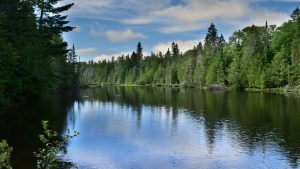
The value and use of the 2,700 Maine’s Great Lakes and Ponds have changed significantly over the past 25 years, when it was estimated that these water bodies contributed $5 billion/year in direct and indirect sales and a net economic value of over $11 billion/year in today’s dollars. Using updated data and methods, we estimated that thetotal net economic value of Maine’s Lakes is over $14 billion, with the largest contribution coming from lakefront properties, followed by recreation trips. In addition, Maine’s lakes are estimated to generate at least $3 billion/yr in direct and indirect sales. Our study emphasizes the need for sustainable management of Maine’s water bodies, considering ecological, social, and economic factors, suggesting investing in that maintenance and improvement in the quality of Maine’s lakes are likely to provide a high return.
For more information on this project, please click here.
Key findings from the project can be found here.\
Global Forest Sector Modeling
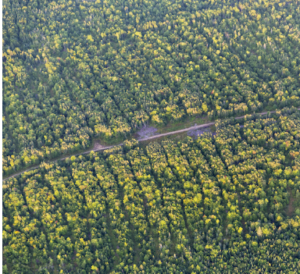
Forest-based building materials may be a critical tool for mitigating and adapting to climate change. Products like mass timber lock away atmospheric carbon, and increasing demand for forest products also increases the demand for sustainably managed forestland. This forestland provides critical non-timber ecosystem services and supports Maine’s outdoor recreation economy. Maine Governor’s Council on Climate Change, environmental non-profits active in the state, and forest industry stakeholders are considering large investments in forest-based materials manufacturing to ensure these benefits to our forests and communities. Research in the forest policy and economics lab supports these efforts through innovation in forest economic modeling. We explore how demand for forest-based building materials might change over time, and work to identify the actual impacts of forest industry investment on global forest health and forest carbon sequestration. We focus specifically on future outcomes for technologies being developed or refined at UMaine: cross-laminated timber (a type of mass timber) and sheet good wood composites bound with cellulose nanofiber. The basis for our work is the Global Timber Model (GTM). The GTM employs the Shared Socioeconomic Pathways framework developed for the International Panel on Climate Change. This dynamic model is likely more accurate than other land use change models because it accounts for year-to-year forest owner decision-making.
Publications from this work can be found here, here and here.
Value of Information for Managing Spruce Budworm
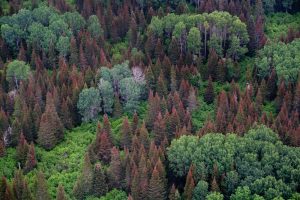 Spruce budworm (SBW) outbreaks present a real threat to Maine’s forest economy, and the current outbreak is expected to affect northern Maine within the next 5 years. Current management approaches include a variety of aerial surveys and fieldwork, but the use of satellite imagery can be a cost-effective and efficient way of detecting and managing SBW. The goal of this research is to determine the cost-effectiveness of remote sensing technology to help forest managers in the state of Maine. Through this research, we will conduct a survey to understand forest manager’s perceptions on SBW & remote sensing techniques. We will analyze the economic tradeoffs of using different management & detection approaches, with the integration of satellite imagery to monitor and manage forest health issues. This research will inform management actions regarding the current SBW outbreak in Maine, and will have widespread applications for forest managers, policymakers and stakeholders at all scales and beyond the borders of the state of Maine.
Spruce budworm (SBW) outbreaks present a real threat to Maine’s forest economy, and the current outbreak is expected to affect northern Maine within the next 5 years. Current management approaches include a variety of aerial surveys and fieldwork, but the use of satellite imagery can be a cost-effective and efficient way of detecting and managing SBW. The goal of this research is to determine the cost-effectiveness of remote sensing technology to help forest managers in the state of Maine. Through this research, we will conduct a survey to understand forest manager’s perceptions on SBW & remote sensing techniques. We will analyze the economic tradeoffs of using different management & detection approaches, with the integration of satellite imagery to monitor and manage forest health issues. This research will inform management actions regarding the current SBW outbreak in Maine, and will have widespread applications for forest managers, policymakers and stakeholders at all scales and beyond the borders of the state of Maine.
Assessing The Impact of Future Forest Management Pathways on Wildlife Habitat Conditions and Species Occupancy in Maine
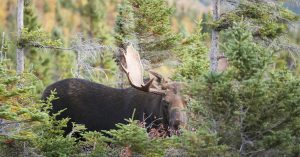 The future of Maine’s forests and the habitat they provide for wildlife is uncertain in the face of many climatic, social, economic, and political influencing factors. Changes in forest management objectives are expected in the upcoming decades and can alter the forested landscape, impacting the quality and suitability of wildlife habitat. This project aims to examine Maine’s socio-economic and political drivers of forest management decisions in the context of changing climates to understand how they may impact future forest habitat conditions for wildlife. By updating and improving recent modeling frameworks and forest sector analyses, we plan to produce scenario-specific spatial land cover and species distribution projections for identified future forest management pathways in Maine. This research is important for long-term planning, protection investment strategies, and development of management best practices and will contribute to the targeted outcome of improved forest management for meeting broader objectives of Maine society.
The future of Maine’s forests and the habitat they provide for wildlife is uncertain in the face of many climatic, social, economic, and political influencing factors. Changes in forest management objectives are expected in the upcoming decades and can alter the forested landscape, impacting the quality and suitability of wildlife habitat. This project aims to examine Maine’s socio-economic and political drivers of forest management decisions in the context of changing climates to understand how they may impact future forest habitat conditions for wildlife. By updating and improving recent modeling frameworks and forest sector analyses, we plan to produce scenario-specific spatial land cover and species distribution projections for identified future forest management pathways in Maine. This research is important for long-term planning, protection investment strategies, and development of management best practices and will contribute to the targeted outcome of improved forest management for meeting broader objectives of Maine society.
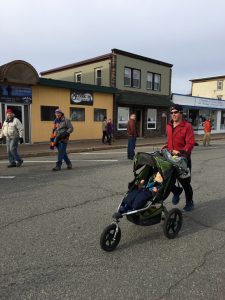
A Resilience Indicators Approach to Forest Resource Investment in Northern Border Communities
The resilience indicator project is an extension of the Katahdin indicators project but expanded to the northern border regions of Maine, New Hampshire, Vermont, and New York. These northern border communities often rely on the health and sustainable management of the forests for their economy. Which can mean if a paper mill or bioelectricity plant closes it can lead economic and cultural hardship in these communities. Our team is developing, quantifying, and tracking a broad set of resilience indicators to gain insight into where communities may be succeeding and where they may need improvement. As well as working with community leaders, local businesses, civic organization, and a household survey to learn about challenges these communities face and help identify opportunities that could emerge.
The final report from the project can be found here. The resilience indicators dashboard is available here.
Other publications related to this work can be found here.
Analyzing Maine Forestland Owner’s Harvest Decisions
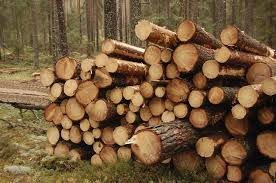 Understanding individual timber harvesting behavior is essential for predicting potential timber supply. It can help us to better understand how various socio-economic conditions and shocks can influence timber supply. This project builds aggregated supply models for the state of Maine directly from harvest choice models applied to detailed forest inventories. Landowner-level timber harvest choices were estimated using a multinomial logit model of two products (sawlogs and pulplogs), under varying management intensities (partial harvest, clearcut), and ownership classifications (public, private, conservation) across varying market conditions. Our approach to modeling the complex timber harvesting patterns across a diverse array of both private, public, and conservation owners can be leveraged to inform policies focused on sustainable timber flows, and easily applied to climate change to simulate future timber supply.
Understanding individual timber harvesting behavior is essential for predicting potential timber supply. It can help us to better understand how various socio-economic conditions and shocks can influence timber supply. This project builds aggregated supply models for the state of Maine directly from harvest choice models applied to detailed forest inventories. Landowner-level timber harvest choices were estimated using a multinomial logit model of two products (sawlogs and pulplogs), under varying management intensities (partial harvest, clearcut), and ownership classifications (public, private, conservation) across varying market conditions. Our approach to modeling the complex timber harvesting patterns across a diverse array of both private, public, and conservation owners can be leveraged to inform policies focused on sustainable timber flows, and easily applied to climate change to simulate future timber supply.
Publications from this work can be found here and here.
Completed Research Projects
Evaluating Cost and Value Proposition of Harvesting Small Diameter Trees Project
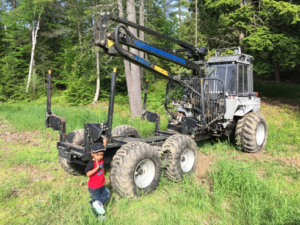 Small-diameter trees (SDT) pose a major challenge for foresters and landowners in terms of reduced revenue and high cost of harvesting. However, it is crucial to harvest SDT to improve the stand conditions of the forest in the long run. In the state of Maine, the proportion of SDT is very high and various socioeconomic factors are involved in driving this harvest decision. This project is aimed at estimating the cost and productivity of solely harvesting SDT and comparing it to the results of conventional methods of cost apportioning used in integrated harvesting. The results from this project will inform landowners and foresters to make better decisions on SDT harvesting.
Small-diameter trees (SDT) pose a major challenge for foresters and landowners in terms of reduced revenue and high cost of harvesting. However, it is crucial to harvest SDT to improve the stand conditions of the forest in the long run. In the state of Maine, the proportion of SDT is very high and various socioeconomic factors are involved in driving this harvest decision. This project is aimed at estimating the cost and productivity of solely harvesting SDT and comparing it to the results of conventional methods of cost apportioning used in integrated harvesting. The results from this project will inform landowners and foresters to make better decisions on SDT harvesting.
Publications from this work can be found here.
Assessing the Climate Mitigation Potential of Maine Agriculture
This project seeks to provide a soil health assessment by partnering with stakeholders to: dete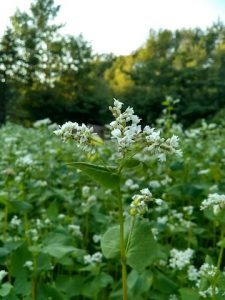 rmine the extent to which Maine farmers are currently utilizing soil health building practices; study the economics of these practices and identify barriers to wider adoption; estimate how much greenhouse gas could be mitigated and farm productivity improved by these practices; and, identify additional ecosystem services that could also be enhanced through improved soil health. Project results will provide farmers and policymakers with a systematic way to evaluate and prioritize soil health building practices based on their economic, agricultural, and environmental performance.
rmine the extent to which Maine farmers are currently utilizing soil health building practices; study the economics of these practices and identify barriers to wider adoption; estimate how much greenhouse gas could be mitigated and farm productivity improved by these practices; and, identify additional ecosystem services that could also be enhanced through improved soil health. Project results will provide farmers and policymakers with a systematic way to evaluate and prioritize soil health building practices based on their economic, agricultural, and environmental performance.
For more information on this project, click here.
Publications related to this work can be found here.
Assessing Climate Perceptions and Developing Adaptation Resources for Small, Medium and Beginning Farms
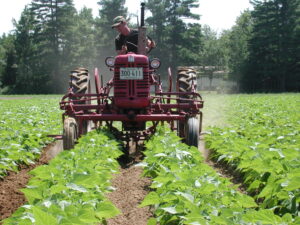 Climate change is impacting farmers across Maine and beyond through increases in extreme weather, changing rainfall patterns, and warmer seasons. Communication from outreach professionals is one factor that helps shape how, and whether, farmers choose to adapt to these changing conditions. Our team, in collaboration with a team from the University of Vermont, is identifying ways to improve climate communication by studying how farmers and outreach professionals view both climate change and the farming systems they work with. Ultimately, we aim to work with farmers to develop climate adaptation resources that better address their perspectives and needs.
Climate change is impacting farmers across Maine and beyond through increases in extreme weather, changing rainfall patterns, and warmer seasons. Communication from outreach professionals is one factor that helps shape how, and whether, farmers choose to adapt to these changing conditions. Our team, in collaboration with a team from the University of Vermont, is identifying ways to improve climate communication by studying how farmers and outreach professionals view both climate change and the farming systems they work with. Ultimately, we aim to work with farmers to develop climate adaptation resources that better address their perspectives and needs.
For more information on this project, click here.
Publications from this work can be found here.
Developing Economic and Community Resilience Indicators for the Katahdin Region 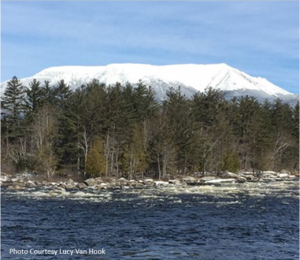
The Katahdin Region, which in this project includes Millinocket, East Millinocket, Medway, Stacyville, Sherman, Patten, Mount Chase, and Island Falls, has experienced significant socioeconomic change over the past few years and citizens are actively exploring opportunities to make the region a more resilient and robust place to live, work, and play. Our team is using multiple approaches such as compiling economic data and community surveying to give regional leaders a current economic and social snapshot of the region so they can strategically apply resources and make informed decisions.
For more information on this project, click here.
Publications from this work can be found here .
